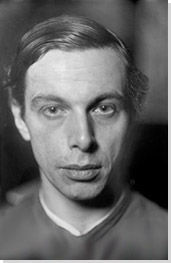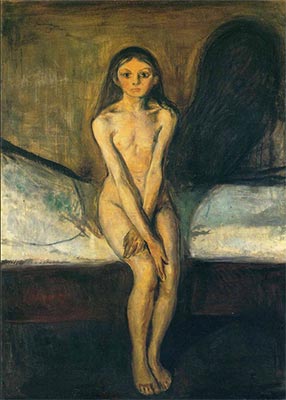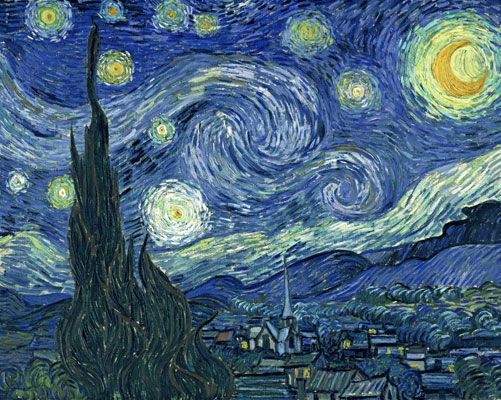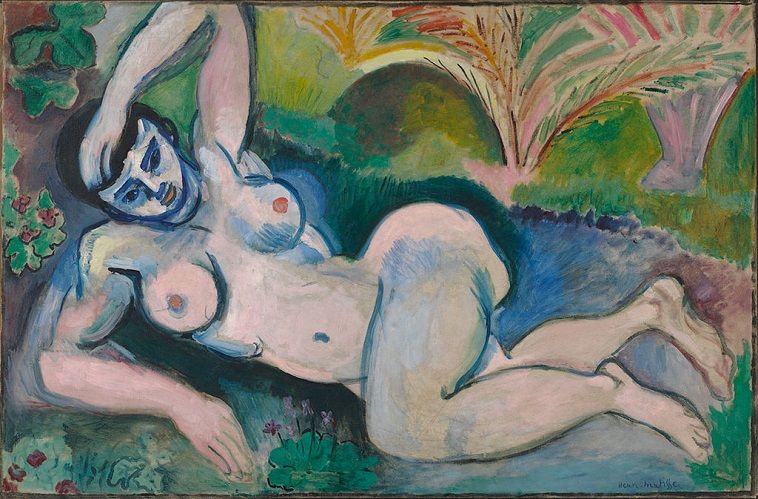Summary of Ernst Ludwig Kirchner
Ernst Ludwig Kirchner was a driving force in the Die Brücke group that flourished in Dresden and Berlin before World War I, and he has come to be seen as one of the most talented and influential of Germany's Expressionists. Motivated by the same anxieties that gripped the movement as a whole - fears about humanity's place in the modern world, its lost feelings of spirituality and authenticity - Kirchner had conflicting attitudes to the past and present. An admirer of Albrecht Dürer, he revived the old art of woodblock printing, and saw himself in the German tradition, yet he rejected academic styles and was inspired by the modern city. After the war, illness drove him to settle in Davos, Switzerland, where he painted many landscapes, and, ultimately, he found himself ostracized from mainstream German art. When the Nazis rose to power in the early 1930s he was also a victim of their campaign against "Degenerate Art." Depressed and ill, he eventually committed suicide.
Accomplishments
- The human figure was central to Kirchner's art. It was vital to the pictures that took his studio as their backdrop - pictures in which he captured models posing as well as aspects of his bohemian life. For Kirchner, the studio was an important nexus where art and life met. But the figure also informed his images of Berlin, in which the demeanor of figures in the street often seemed more important than the surrounding cityscape. And, most commonly, he depicted the figure in movement, since he believed that this better expressed the fullness and vitality of the human body.
- Kirchner's Expressionistic handling of paint represented a powerful reaction against the Impressionism that was dominant in German painting when he first emerged. For him, it marked a reaction against the staid civility of bourgeois life. He would always deny that he was influenced by other artists, yet Henri Matisse and Edvard Munch were clearly important in shaping his style. Fauvism was particularly significant in directing his palette, encouraging him to use flat areas of unbroken, often unmixed color and simplified forms.
- Kirchner believed that powerful forces - enlivening yet also destructive - dwelt beneath the veneer of Western civilization, and he believed that creativity offered a means of harnessing them. This outlook shaped the way in which he depicted men and women in his pictures, as people who often seem at war with themselves or their environment. It also encouraged his interest in Primitivism, in particular that of the Pacific Islands, for he considered that this work offered a more direct picture of those elemental energies. Primitive art was also important in directing Kirchner to a more simplified treatment of form. Primitive sculpture undoubtedly inspired his own approach to the medium and his love of rough-hewn, partially painted surfaces.
Important Art by Ernst Ludwig Kirchner
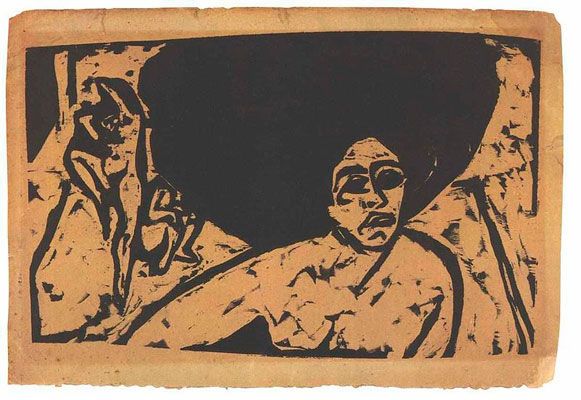
Nude Dancers (Nackte Tanzerinnen)
This woodcut print features a group of voluptuous nude female dancers on stage. Created during the Die Brucke era, the work exemplifies the energetic atmosphere of a meeting in Kirchner's studio, a recurrent scene in his pictures. In an attempt to revive the traditional printmaking, Kirchner created expressive, dynamic black lines by aggressively carving away the woodblock; the large areas of light and dark create an ambiguous sense of spatial depth on a two dimensional surface. Kirchner renders a balance between the two extremes (light and dark, bold and delicate) to create a harmonious composition, allowing the eye to sweep across the picture plane. The conscious decision to leave white areas unrefined, making the process of carving visible, is a rejection of conventional academic teaching, a philosophy typified by Die Brucke.
Woodcut print - The Museum of Modern Art, New York
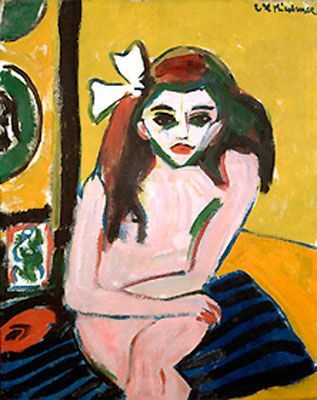
Marzella
Around the time this picture was painted Kirchner was spending time around the Moritzberg lakes, and the girl depicted is the daughter of a circus artiste's widow that he met there. Emblematic of his Die Brucke phase, Marzella is a provocative depiction of a young, pre-pubescent girl. The youth of the figure coupled with the intense gaze and heavily made-up face give the appearance of uncanny maturity. Unnatural colors and self-conscious body language add to the unease in the composition. The painting is an example of a technique of rapid sketching used by members of Die Brucke, who believed this process allowed them to capture the "soul" of the subject. The picture is also indicative of the influence of Edvard Munch on Kirchner's work, since the composition appears to be based on Munch's Puberty (1892).
Oil on canvas
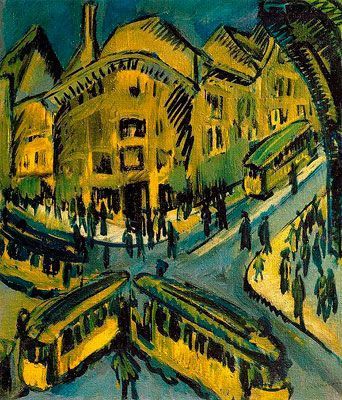
Deutsch: Nollendorfplatz
Deutsch: Nollendorfplatz reveals Kirchner's shift in subject matter from the female nude to depictions of the metropolis. Here, the perspective is skewed, a clear rejection of his previous study of architecture. The quick, gestural use of line creates a sense of immediacy and speed within the piece, capturing the essence of a busy German city. The use of clashing blues and yellows to depict the cityscape is typical of Kirchner's style during the Die Brucke years, though the distorted imagery of the city may also have been inspired by an exhibition of Italian Futurist art that he saw in the year that this was painted.
Oil on canvas - The Museum of Modern Art, New York
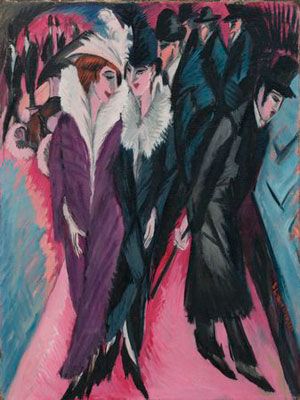
Street, Berlin
The vigorously painted Street, Berlin explores the figure of the city prostitute: chic streetwalkers who have angular, mask-like faces. The two women proudly walk down the busy, tilted street of cloaked men with more sullen expressions. Street, Berlin accentuates the hidden sensuality beneath the prostitutes' haughty fashion. The luxury and anxious energy in painting also serve as a commentary on a pre-World War I German culture, as Kirchner believed increasing political tensions further detached urban individuals from society. The Streetwalker series, of which this is a famous example, is one of the most admired areas of Kirchner's art. The models for the series may have been dancer Gerda Schilling and her sister Edna, who later became the artist's lover. He once described the two women as having "beautiful, architecturally structured, rigorously formed bodies", and his encounter with them undoubtedly influenced this series of figure paintings.
Oil on canvas - The Museum of Modern Art, New York
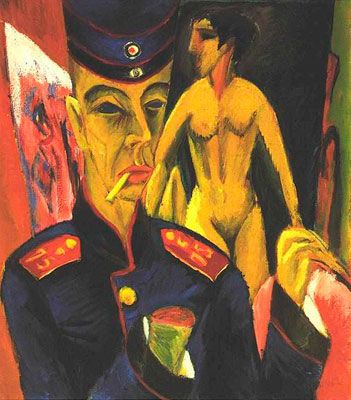
Self-Portrait as a Soldier
Self-Portrait as a Soldier examines the psychological distress experienced by Kirchner during his service in the military. He was a reluctant soldier and soon became preoccupied with avoiding service, and following a self-induced psychosis, aided by his use of alcohol and drugs, he was discharged. The painting displays a uniformed Kirchner standing in his studio, smoking a cigarette. His right hand is severed, symbolizing his trauma and possibly also his anxiety of his loss of manhood; the motif is based on Van Gogh's Self-Portrait with a Bandaged Ear (1889), a picture the artist painted after he too had inflicted injuries upon himself. In the background of Kirchner's picture stands a nude who bears a resemblance to his lover of the time, Erna Schilling.
Oil on canvas - Allen Memorial Art Museum, Ohio
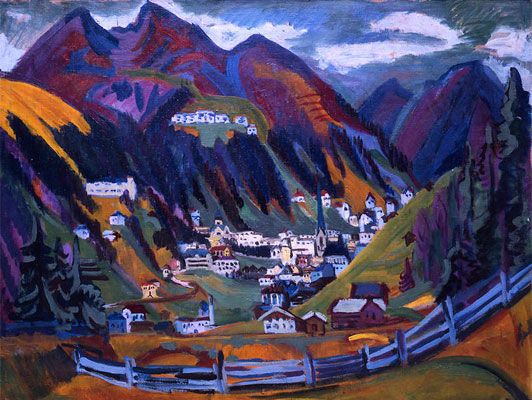
Blick auf Davos
After being discharged from the military, Kirchner took refuge in Davos, where the Alps surrounding his home provided a new kind of bucolic inspiration. The painting depicts a cool mountain range embracing a small town, a pictorial sigh of relief following the end of World War I. Inspired by van Gogh's landscape paintings and the work of the Fauvists, Kirchner used pulsating shades of violet, blue, green, and yellow to depict the rural scene. The swooping perspective is similar to Kirchner's early paintings of urban life.
Oil on canvas
Biography of Ernst Ludwig Kirchner
Early Training
Ernst Ludwig Kirchner was born on May 6, 1880 in Aschaffenburg, Bavaria, and began studying architecture at the Dresden Technical High School in 1901 at the encouragement of his parents. While attending classes, he became close friends with Fritz Bleyl, who shared his radical outlook on art and nature. During this time, Kirchner chose to dedicate himself to fine art rather than architecture.
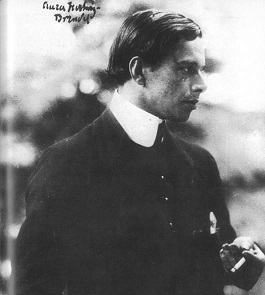
In 1905, Kirchner and Bleyl, along with fellow architecture students Karl Schmidt-Rottluff and Erich Heckel, founded the artist group Die Brücke ("The Bridge.") The aim was to eschew traditional academic styles and to create a new mode of artistic expression, forming a "bridge" between classical motifs of the past and the present avant-garde. Die Brücke expressed extreme emotion through crude lines and a vibrant, unnatural color palette. The group would meet in an old butcher's shop that served as Kirchner's studio to practice figure drawing. (Studio meetings, however, would often devolve into casual lovemaking and general nudity.) Much of the artwork created by Die Brücke was a direct response to the graphic work of Albrecht Dürer and the bold color palette of the Neo-Impressionists. Kirchner held a particular interest in the woodcarvings of Dürer, and sought to modernize them with his own unique style of pared-down lines and dynamic compositions.
Mature Period
In 1906, Kirchner and Die Brücke held their first group exhibition in a lamp factory. The female nude, inspired by late-night studio meetings, was the primary subject of the exhibition. Kirchner's woodcut print, Nude Dancers (Nackte Tanzerinnen) (1909), exemplifies the energetic tone of the exhibition. The crude, graphic lines depict naked women dancing on a stage. Die Brücke ended in 1913 with Kirchner's publication of Chronik der Brücke (Brücke Chronicle), which focused on the "freedom of life and of movement against the long-established older forces."
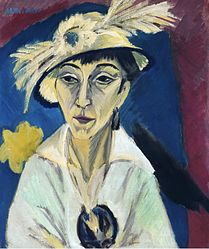
Thereafter Kirchner desired to establish his own identity as an artist. He developed an interest in industrialization and the alienation experienced by individuals in cities. Gradually, he turned his attention away from the female nude and toward the Berlin streets with the creation of the Strassenbilder series in 1915. These paintings focus on the energetic life of modern Berlin, as he observed the changing political situation of World War I and its impact on German culture. Kirchner depicted crowds of people with bold, expressive brushstrokes and in brash colors of blue, green, orange, and pink. Perspective was often skewed, the figures looming and teetering either toward or away from the picture plane, as a rejection of the academic conventions that he learned in his architecture courses.
Late Years and Death
Kirchner voluntarily joined the military in 1915, though he was released shortly after due to a nervous breakdown. He recovered in several Swiss hospitals between 1916 and 1917. Scarred by his military experience, in 1918 he moved to a farmhouse in the Alps, near Davos, where his new residence inspired a series of mountain landscapes.
His reputation as a leading German Expressionist continued to grow with exhibitions in Switzerland and Germany in the 1920s. His first monograph and catalog of graphic works were published in 1926. He was commissioned to create several murals in the Folkwang Museum in 1927, and in 1928 was invited to take part in the Venice Biennale. In 1931, as his success continued, Kirchner became a member of the Prussian Academy of Arts.
In 1933, however, German Nazis branded Kirchner as "Degenerate artist," forcing him to resign from the Berlin Academy of Arts. Over 600 of his works were detained or destroyed by the Nazi regime. The traumatic impact of these events led to his suicide on July 15, 1938.
The Legacy of Ernst Ludwig Kirchner
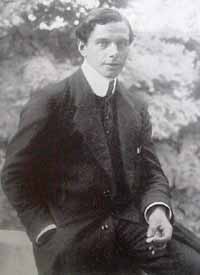
Ernst Ludwig Kirchner was a leading force behind the Expressionist movement in Germany. Since 1913, his work has gained international recognition, extending its popularity into America. His art captures German culture at a critical point in pre-World War I history. Although his work speaks to a specific culture, his expressive skill as a painter and printmaker has influenced generations. Many attempt to emulate Kirchner's distorted sense of perspective. The graphic, agitated lines and highly-keyed color palette are timeless and distinct to the artist. Kirchner's work continues to be exhibited and sold around the world. It has also been a significant influence on new generations of Expressionists, including artists such as Georg Baselitz and Jörg Immendorf.
Influences and Connections

-
![Erich Heckel]() Erich Heckel
Erich Heckel -
![Karl Schmidt-Rottluff]() Karl Schmidt-Rottluff
Karl Schmidt-Rottluff ![Fritz Bleyl]() Fritz Bleyl
Fritz Bleyl
-
![Willem de Kooning]() Willem de Kooning
Willem de Kooning -
![Georg Baselitz]() Georg Baselitz
Georg Baselitz ![Jörg Immendorff]() Jörg Immendorff
Jörg Immendorff
-
![Erich Heckel]() Erich Heckel
Erich Heckel -
![Karl Schmidt-Rottluff]() Karl Schmidt-Rottluff
Karl Schmidt-Rottluff ![Otto Mueller]() Otto Mueller
Otto Mueller![Fritz Bleyl]() Fritz Bleyl
Fritz Bleyl
Useful Resources on Ernst Ludwig Kirchner
- Kirchner and the Berlin StreetOur PickBy Deborah Wye, Ernst Kirchner
- KirchnerOur PickBy Norbert Wolf
- Ernst Ludwig Kirchner Drawings and PastelsBy Ernst Ludwig Kirchner, Roman Norbert Ketterer, Wolfgang Henze
- Ernst Ludwig Kirchner and Friends: Expressionism from the Swiss MountainsBy Beat Stutzer, Samuel Vitali, Han Steenbruggen, Matthias Frehner
- Hand and Head: Ernst Ludwig Kirchner's Self-Portrait as SoldierBy Peter Springer, Susan Ray
- Ernst Ludwig Kirchner: The Photographic WorkOur PickBy Ernst Ludwig Kirchner
 Ask The Art Story AI
Ask The Art Story AI